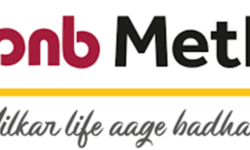MUMBAI:
The retail lending market in India grew significantly over the year ended March 2018, with balances increasing by 25% from Q1 2017 to Q1 2018 and the number of outstanding accounts increasing by more than 32% over the same period. Meanwhile, the average balance per borrower grew at more moderate levels for most credit products over the past year. These findings are from the Q1 2018 TransUnion CIBIL Industry Insights Report, which reveals trends and performance across a range of retail lending products, including auto loans, consumer loans, credit cards, home loans, personal loans, and loans against property.
“The Indian consumer credit market is growing at a robust rate,” said Yogendra Singh, vice president of research and consulting for TransUnion CIBIL. “The number of live accounts rose considerably across all major credit types over the past year. Consumer demand for credit remains strong, and lenders are continuing to meet this demand. The average balance per borrower grew as well for most credit products, but at more modest levels. This trend is positive both for consumers and the Indian economy overall, as consumers have more ability to make major purchases such as homes, automobiles and durable goods.”
The TransUnion CIBIL Industry Insights Report also found that delinquency rates—90 or more days past due (DPD)—for major retail lending products declined or remained relatively stable over the year ended Q1 2018. Of particular note, the percentage of auto loan balances 90+ DPD declined by 83 basis points to 2.78% in the first quarter. “Despite the significant growth in retail lending in recent years, consumers continue to do a good job of managing their debts.
These positive performance trends indicate that significant growth potential remains for the retail lending market,” continued Singh.
These positive retail financing growth and performance trends support a recent TransUnion CIBIL study, which estimated that nearly 150 million Indian consumers who are not currently credit-active could be eligible for retail credit. The study found that tapping into this huge potential borrower base could provide significant growth opportunities for retail lenders and provide a continued boost to the Indian economy.
Consumption Lending Products Continued Their Strong Acceleration Trends
The TransUnion CIBIL report found robust growth over the past year in all consumption lending products—consumer durable loans, credit cards and personal loans. The number of live consumer durable loans increased by 83% over the past year to reach 19.5 million at the end of Q1 2018.
This was powered by a 69% increase in the live borrower count to 13.9 million. Much of the growth in this product has been driven by issuing higher volumes of smaller ticket loans. Consequently, the average balance per consumer declined by 5.7% over the year ended Q1 2018 to INR 10,382.
The number of live credit card accounts increased over 28% to 32.6 million during the year ended Q1 2018, while outstanding balances increased by 43% to INR 751 billion during the same period. Over the past two years, and particularly following the demonetization event in November 2016, the number of credit card accounts has increased nearly 50%, while the number of consumers with a card account has expanded as well.
Consumer usage of those credit cards has also increased—the average credit card balance per borrower rose 12% in the year ended Q1 2018 to INR 35,495. It is anticipated that the trend of increasing adoption of digital transaction channels should continue to act as a tailwind for future card growth.
Personal loans saw similar growth dynamics, with the number of live consumers increasing 25% to 12.1 million in the year ended Q1 2018, while aggregate balances increased 49% to INR 2,724 billion. At the same time, delinquency rates for consumption lending products remained at low levels. The 90+ DPD balance delinquency rate for consumer durable loans declined by 43 basis points year-over-year to reach 0.89% at the end of Q1, while the delinquency rate for personal loans dropped 19 basis points over the year to 0.52%. The credit card 90+ DPD balance delinquency rate increased modestly—by 9 basis points—to 1.70% in Q1 2018, but remains essentially unchanged from the level two years prior in Q1 2016.
“Consumers are increasingly seeking and gaining access to consumption lending products such as consumer durable loans, credit cards and personal loans,” added Singh.
“As Indian consumers continue to expand beyond cash-based purchases, these products provide access to short-term liquidity as well as, in the case of credit cards, transactional convenience. It is the sign of a healthy and maturing economy that consumers are increasingly viewing credit as a useful tool in managing their personal finances. Moreover, given the low and steady delinquency rates for these products, consumers are demonstrating their ability to effectively manage the credit they are taking on. This is good news both for the economy and for lenders who are looking to serve the growing needs of consumers.”




